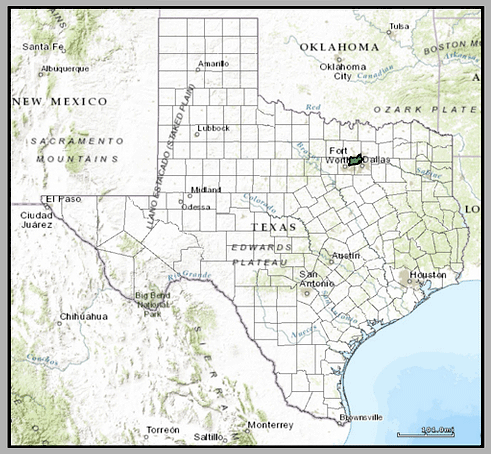By Jim Ellis — May 27, 2022
Senate
Pennsylvania: Recount Ordered — It’s now been more than a week since the primary election here and still no declared winner in the Republican Senate primary. Pennsylvania election authorities have already ordered election officials in the state’s 67 counties to begin the inevitable recount. Officials know the final unofficial count, which could be released as early as today or tomorrow, will be within the half percent that triggers an automatic recount.
At this writing, the numbers show Dr. Mehmet Oz leading former hedge fund CEO David McCormick by 902 votes from more than 1.3 million ballots cast. The deadline for military, overseas, and provisional ballot reception was Tuesday. It is being reported that this is the closest primary in Pennsylvania’s modern political era.
House
NY-16: New Challenger for Rep. Bowman — Westchester County Legislator Catherine Parker (D) announced her intention to challenge Rep. Jamaal Bowman (D-Yonkers) in the upcoming Aug. 23 Democratic primary. Another Westchester Legislator, Vedat Gashi (D), is already in the race. Parker says the new district lines move Gashi’s political base outside the district’s confines, hence her becoming a candidate. Irrespective of this activity, Rep. Bowman is favored for re-nomination and re-election in the new 16th CD.
NY-17: Two Republicans Oppose Rep. Maloney — After state Sen. Alessandra Biaggi (D-Bronx) announced her Democratic primary challenge to Democratic Congressional Campaign Committee chair Sean Patrick Maloney (D-Cold Spring), two Republicans have jumped into the new 17th District campaign, state Assemblyman Matt Lawler (R-Pearl River) and Rockland County Legislator Charles Falciglia.
The new 17th is rated D+7 through the FiveThirtyEight data organization’s calculations. While the seat clearly leans Democratic, Rep. Maloney has attracted a great deal of attention since he announced against freshman Rep. Mondaire Jones (D-Westchester County) instead of running just north in what is now the open 18th CD. For his part, Jones is now running in the southwestern Manhattan/Brooklyn new 10th District.
PA-17: New Poll Already Shows Toss-Up — The Democratic Congressional Campaign Committee is already out with a new poll of the open PA-17 CD taken before the May 17 primary (May 9-10; 494 likely PA-17 voters; live interview & text). They project a 44-41 percent lead for their new nominee, election law attorney Chris Deluzio (D) over former local official Jeremy Shaffer, the new GOP nominee. When the DCCC first started releasing polling several years ago, the data was heavily slanted in their candidates’ favor, thus forfeiting credibility. In the last several years, however, their results have been closer to the mark, but still slightly slanted. Therefore, a DCCC poll finding Deluzio only ahead three points is a clear indication this race already begins in the toss-up realm.
Texas: TX-24, TX-15 — Two electoral contests from Tuesday remain uncalled and are very tight. In the 28th District, Rep. Henry Cuellar (D-Laredo) holds only a 177 vote run-off lead over opponent Jessica Cisneros (D). The Secretary of State’s released results show all precincts reporting, meaning ancillary votes arriving in the mail and provisionals are likely the only ballots remaining. A recount will probably be requested, but based upon the trends of where the remaining ballots lie, it appears that Rep. Cuellar’s slim advantage will likely grow.
Staying in South Texas, the Democratic 15th District runoff between businesswoman Michelle Vallejo and attorney Ruben Ramirez leans toward the former by just 23 votes. The voter pool at this point, however, is just over 12,000 individuals, an extremely low participation total. The final ballots can clearly tip this race to either candidate. The eventual winner will face Republican 2020 nominee Monica de la Cruz. The general election campaign will likely begin as a toss-up. If the Democratic decision is drawn out over a long period, de la Cruz would be staked to a key advantage in the early general election period. The FiveThirtyEight rating for TX-15 is EVEN.


 Feb. 23, 2021 — The Daily Kos Elections website staff have just completed the calculations they perform after every presidential election: that is, determining how all 435 congressional district electorates voted for president, and then cross-referencing that result with their US House vote.
Feb. 23, 2021 — The Daily Kos Elections website staff have just completed the calculations they perform after every presidential election: that is, determining how all 435 congressional district electorates voted for president, and then cross-referencing that result with their US House vote. In looking at all 435 US House districts, we see that 168 electoral contests were decided with the winner receiving less than 60 percent of the vote. A total of 53 campaigns featured the victor receiving 52 percent or less. These 53 results yielded 27 Democratic wins and 26 for the Republicans. Of those, eight, four for each party, produced a plurality result with neither candidate obtaining majority support. It is these latter eight elections where we concentrate our focus.
In looking at all 435 US House districts, we see that 168 electoral contests were decided with the winner receiving less than 60 percent of the vote. A total of 53 campaigns featured the victor receiving 52 percent or less. These 53 results yielded 27 Democratic wins and 26 for the Republicans. Of those, eight, four for each party, produced a plurality result with neither candidate obtaining majority support. It is these latter eight elections where we concentrate our focus.  By Jim Ellis
By Jim Ellis By Jim Ellis
By Jim Ellis Aug. 9, 2019 — With so many seats coming open during the past 10 days, it’s time to review exactly which districts will be incumbent-less for the coming election and how many are truly competitive.
Aug. 9, 2019 — With so many seats coming open during the past 10 days, it’s time to review exactly which districts will be incumbent-less for the coming election and how many are truly competitive.
